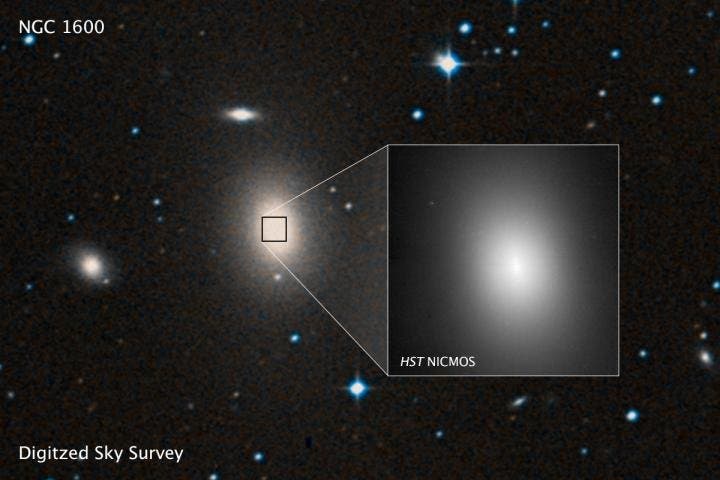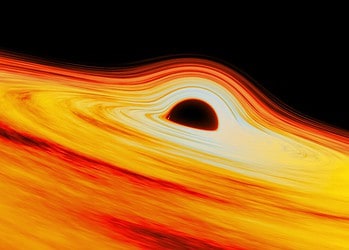Astronomers have found a supermassive black hole in a completely unexpected area of space, a sparse area where massive galaxies are few and far between. This could mean that many other similar structures still exist, and supermassive black holes may be much more common than previously believed.

Credit: ESA/Hubble image courtesy of STScI.
The name pretty much says it all – supermassive black holes are the most massive structures in the known universe, million and even billion times more massive than the Sun. The origin of supermassive black holes remains an open field of research, we don’t know how they formed and how they evolved. They are found at the center of many galaxies, accumulating more and more material under the effect of their gravitational field.
Until now, these black holes were found at the center of massive galaxies, and it was thought that’s pretty much the only place you can find them. However, the newly discovered one, NGC 1600 lies in a “galactic desert”, in the so-called Coma Cluster. The thing is, if they can be found there, then they could potentially be found in many other similar places. Chung-Pei Ma, a UC Berkeley professor of astronomy and head of the MASSIVE Survey says this can help us better understand how these gargantuan bodies came to be.
“Rich groups of galaxies like the Coma Cluster are very, very rare, but there are quite a few galaxies the size of NGC 1600 that reside in average-size galaxy groups,” Ma said. “So the question now is, ‘Is this the tip of an iceberg?’ Maybe there are a lot more monster black holes out there that don’t live in a skyscraper in Manhattan, but in a tall building somewhere in the Midwestern plains.”
The black hole’s sphere of influence — the region in which the gravitational potential of the black hole dominates the gravitational potential of the host galaxy — is much larger than the event horizon, the point of no return, which would be about eight times the size of Pluto’s orbit for the NGC1600 black hole.
“Somehow the stars have been scared away from the center of very massive galaxies, and either were afraid to come in, or came in and got kicked out,” Ma said. The stellar orbits around the center of NGC 1600 indicate the latter, which “may be support for a binary black hole formed by a merger.”
Journal Reference:
- Jens Thomas, Chung-Pei Ma, Nicholas J. McConnell, Jenny E. Greene, John P. Blakeslee, Ryan Janish. A 17-billion-solar-mass black hole in a group galaxy with a diffuse core. Nature, 2016; DOI: 10.1038/nature17197






